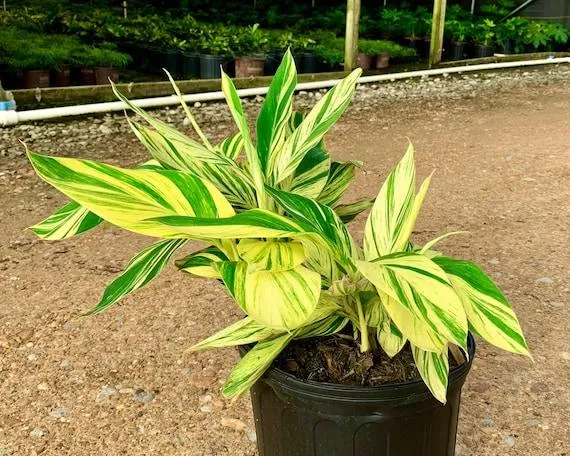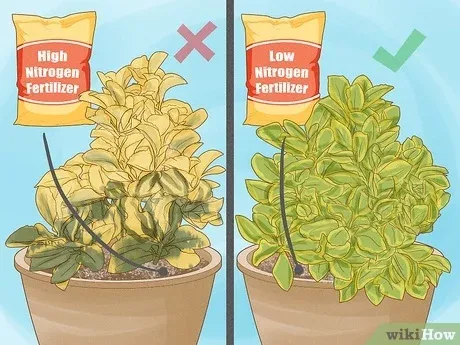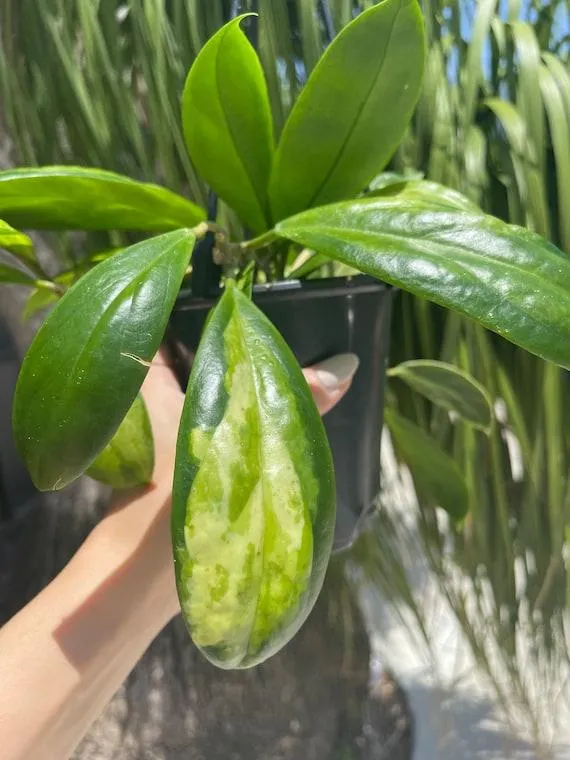A Detailed Guide to Variegating Your Houseplants
If you want to bring some visual interest and unique patterns to your indoor plant collection, variegating your plants is a fun option to consider. Variegation refers to the natural or artificial introduction of differently colored patches in the leaves of a plant. These stripes, spots or splashes of white, yellow or pink contrast nicely against the green background of leaves. In this article, I’ll explain the different variegation techniques and provide tips to successfully variegate your houseplants.
Understanding Variegation
Variegation occurs when there is a loss of chlorophyll pigmentation in some plant tissues, resulting in various patterns. It can happen naturally through plant mutations or be induced artificially. The non-green parts of variegated leaves don’t conduct photosynthesis like the green areas. So variegated plants need extra care and grow more slowly.
There are three main types of variegation:
- Stripe variegation – Leaves have long streaks or stripes of green and white/yellow color.
- Blotch variegation – Irregular blotches or streaks of different hue appear on leaves.
- Edge variegation – The leaf edges are a contrasting color than the center.
Some common houseplants known for natural variegation include Chinese evergreen, pothos, philodendron and spider plant.
Propagating Variegation
While some variegation is genetic, you can induce and maintain variegation in non-variegated plant varieties through propagation techniques. Here are three main methods:
Leaf Cuttings
Take cuttings from the variegated edges of leaves using a sharp sterilized blade. Allow the cut ends to callus over before planting. This method works great for plants like pothos and philodendron. Stake the new growth upright so the variegation pattern repeats on future leaves.
Stem Cuttings
Take 4-6 inch stem cuttings right below a node, treating and planting them the same as leaf cuttings. Variegated spider plants, golden pothos and Chinese evergreen can be propagated this way. Take cuttings only from areas showing clear variegation for it to carry on to new growth.
Tissue Culture
This advanced lab technique involves culturing small pieces of plant tissues or cells in sterile test tubes to encourage shoots. It’s useful for rare variegated cultivars but requires specialized equipment. Leave tissue culture to expert growers unless you’re very ambitious!
Stabilizing Variegation
Since variegation isn’t always genetically stable, here are some tips to maintain a plant’s variegation pattern through successive propagations:

- Only propagate from areas where the variegation is very clear and well-defined.
- Give the plant adequate but not excessive light. Too much sun may cause loss of variegation.
- Provide balanced fertilizer and adjust watering to prevent leaf drop from weak variegated areas.
- Control pests diligently as stress from infestations can trigger loss of variegation.
- Regularly check new growth and remove and destroy any reverted green shoots.
With patience and care, you can stabilize an unstable variegated cultivar over 4-5propagation cycles. Always keep mother plants to track variegation patterns.
Inducing Variegation Artificially
For plants that don’t display natural variegation, here are some techniques people use experimentally to artificially induce it:
Ethalene Gas Exposure:
Subjecting leaf/stem cuttings or whole plants to low concentrations of ethylene gas in an enclosed space for 2-3 days may cause a sport mutation triggering variegation. But results are unpredictable and effects not guaranteed.
Tissue Culture with Growth Regulators:
Exposing small leaf/stem explants to growth regulators like cytokinins in culture MEDIA sometimes coaxes rare variegated shoots. Requires lab resources though.
Grafting onto Variegated Rootstock:
Graft compatible plant varieties can be top-grafted onto a variegated rootstock to induce variegation in the scion over 1-2 years. Works well for plants like pothos, philodendrons and monstera.
Creating Chimeras:
Variegation may develop in chimeras – plants composed of two distinct cell lines fused together. You can encourage this by grafting together non-variegated scions from two genetically different parent plants of the same species.
While these are intriguing techniques, results are chancy. There’s no guaranteed way to artificially induce stable variegation as of now.
Tips for Growing Variegated Houseplants
Here are some tips to keep variegated plants happy based on my experience growing them at home:
Light:

Most variegated plants need some direct morning or afternoon sun but not too much which could cause leaf burn. Bright, indirect sunlight works great. Position plants near an east or west facing window.
Water:
Because variegated areas conduct minimal photosynthesis, soil must never be allowed to fully dry out. Check soil moisture daily and water when the top inch feels dry. Err on the side of too wet rather than dry.
Fertilizer:
Feed regularly during spring-summer with a diluted liquid houseplant fertilizer. Variegated sections are weaker so balanced nutrients prevent yellowing and drop. Skip fertilizing in winter when growth slows.
Pruning:
Regularly remove any fully green shoots emerging as they divert energy from variegated areas. Snip off yellow or white sections if they fail to remain turgid and alive over time.
Pests:
Scale, mealybugs and spider mites find variegated plants more prone to attack due to compromised sap transport. Check thoroughly for signs and treat immediately to avoid added stress.

Rotate:
Slowly rotate pots every few weeks so all sides receive an equal dose of light to avoid variegation appearing stronger on one side of leaves.
By following these tips aimed at supporting weaker variegated regions, you can keep your variegated houseplants looking their vibrant, colorful best for years to come! Let me know if you have any other questions.
Variegation Plant Care Tips
| Plant Type | Light Needs | Watering | Soil | Other Tips |
|---|---|---|---|---|
| Peperomia | Bright indirect light | Allow soil to dry slightly between waterings | Well-draining potting mix | Tolerates low light and grows well as a houseplant |
| Philodendron | Bright indirect light | Water when top inch of soil is dry | Rich, well-draining potting mix | Propogate by stem or leaf cuttings for new plants |
| Pothos | Low to medium indirect light | Let soil dry out slightly between waterings | Well-draining potting mix | Vigorous grower, trails well as a hanging plant |
| Chinese Evergreens | Bright indirect light | Water when top inch of soil is dry | Rich, well-draining potting mix | Tolerates low humidity and grows well as a houseplant |
| Dieffenbachia | Bright indirect light | Let soil dry slightly between waterings | Rich, well-draining potting mix | Poisonous if eaten, grow for decorative foliage |
FAQ
-
What is variegation?
Variegation refers to the way some plants grow with multiple colors or patterns in their leaves or stems. Basically, it means the plant has patches or streaks of a different hue than the rest of the plant.
-
How does variegation occur naturally?
Variegation happens in plants due to a genetic mutation that inhibits the plant’s ability to produce green chlorophyll in certain parts. As a result, other pigments like white, yellow or pink appear alongside the green. The mutation can occur by chance or be passed down in plant families.
-
Can any plant be variegated?
While quite a few species of plants variegate naturally, not all plants can be variegated. According to botanists, variegation is more likely to occur in plants that spread through vegetative means like runners or stolons. At the same time, woody plants or those that reproduce sexually may find it difficult to hold a variegated trait.
-
How can you artificially variegate plants?
There are a couple methods gardeners use to artificially variegate plants. One way is through chemical treatments during propagation. Applying substances like Ethephon or B-Nine can inhibit chlorophyll production in cuttings. Another strategy involves grafting a variegated plant part like a leaf or stem onto a non-variegated plant. This passes the variegation gene.
-
What types of plants are commonly variegated?
Some of the most popular variegated plant varieties include golden pothos, variegated monstera, English ivy, spider plant, peace lily and variegated rubber plant. These houseplants love indirect sunlight and show off beautiful white, pink or yellow markings. Variegated hostas and coleus are also pretty garden plants to consider for their colorful foliage.
-
Are variegated plants harder to care for?
You might think variegated plants need extra care since their leaves lack full green pigment. However, studies show they usually have similar care needs to their non-variegated counterparts. As long as variegated plants get enough sun and are watered properly, they can thrive. The one caveat is the variegation may revert back to solid green without careful propagation. So some extra care goes into maintaining a plant’s variegated pattern over successive generations.

-
Is the variegation stable or will it fade?
Whether the variegation remains stable depends a lot on the individual plant variety. In some, the pattern holds true when the plant is divided or propagated from cuttings. However, variegation can fade or disappear altogether with successive generations if the mutation isn’t a strongly dominant trait. Gardeners try passing on variegation through stem or leaf cuttings to be safe. Sometimes low light triggers reversion back to solid green as well.
-
What are the benefits of growing variegated plants?
While variegation doesn’t serve an obvious function, it certain offers appeal. The splash of contrasting colors adds visual interest to gardens and homes. Variegated plants provide a unique aesthetic that can brighten up a space. They also tend to thrive well as low-light houseplants since the missing chlorophyll doesn’t require as much sun. So variegation offers options for decorative plants that adapt to less than optimal indoor conditions too.
